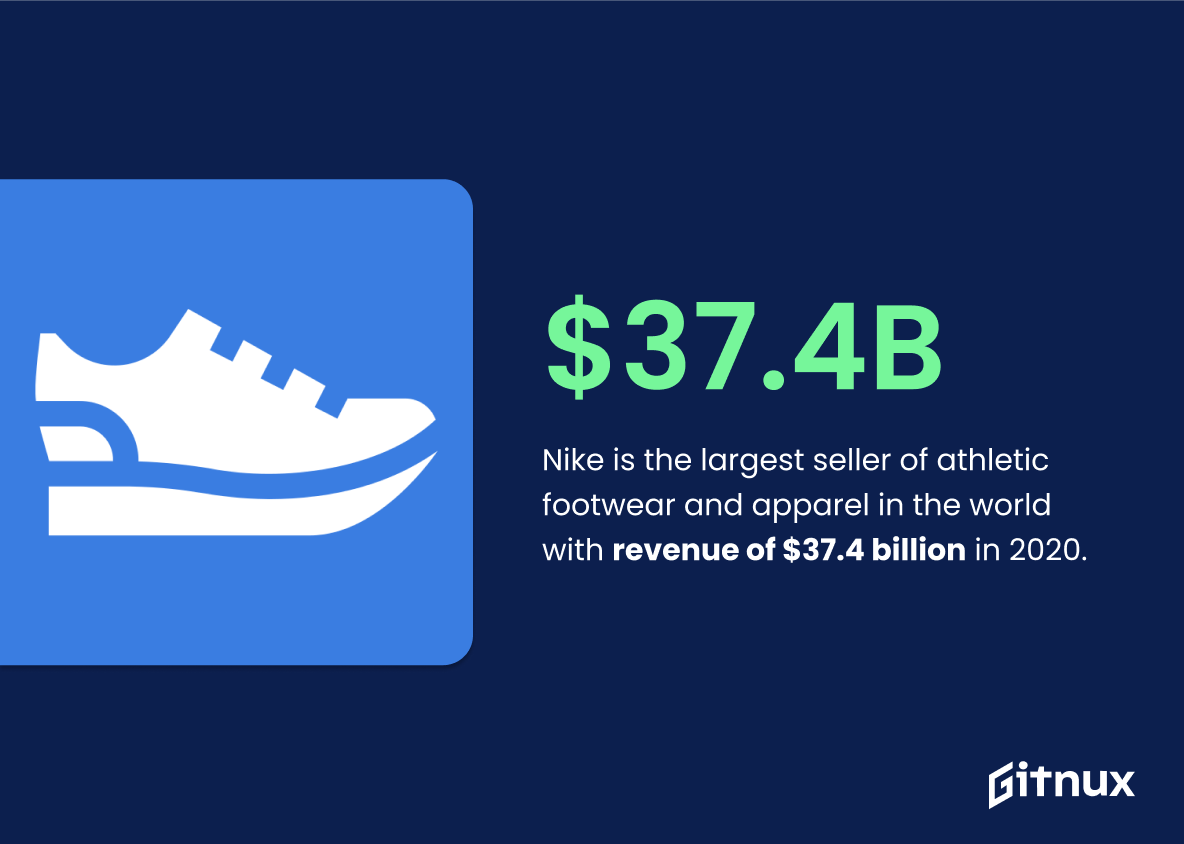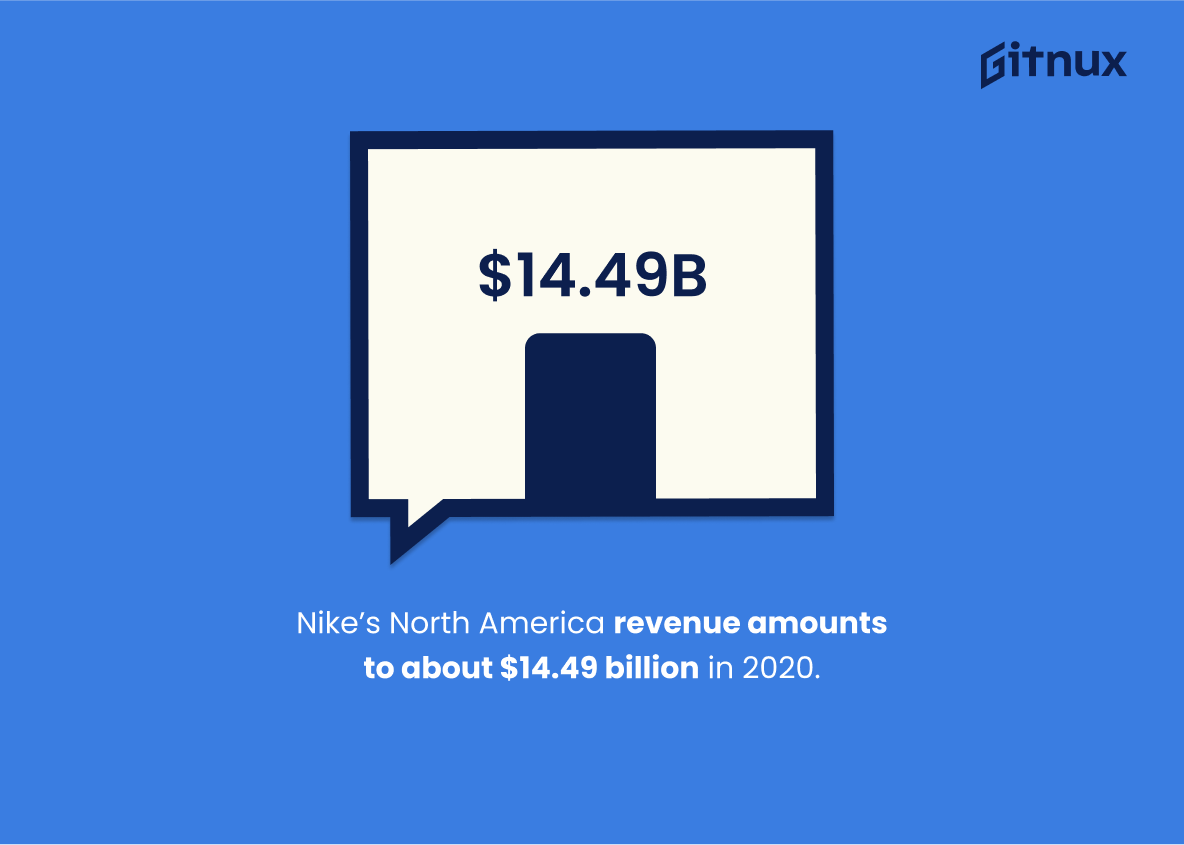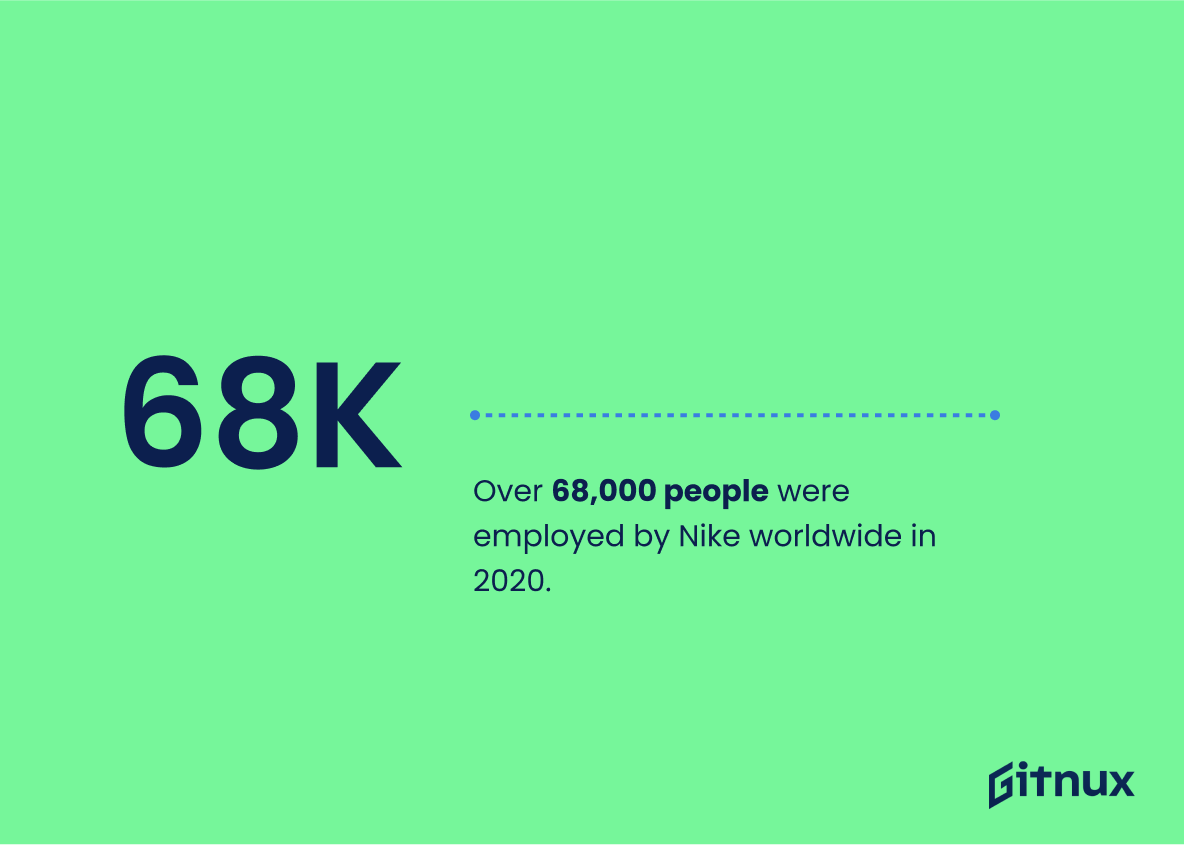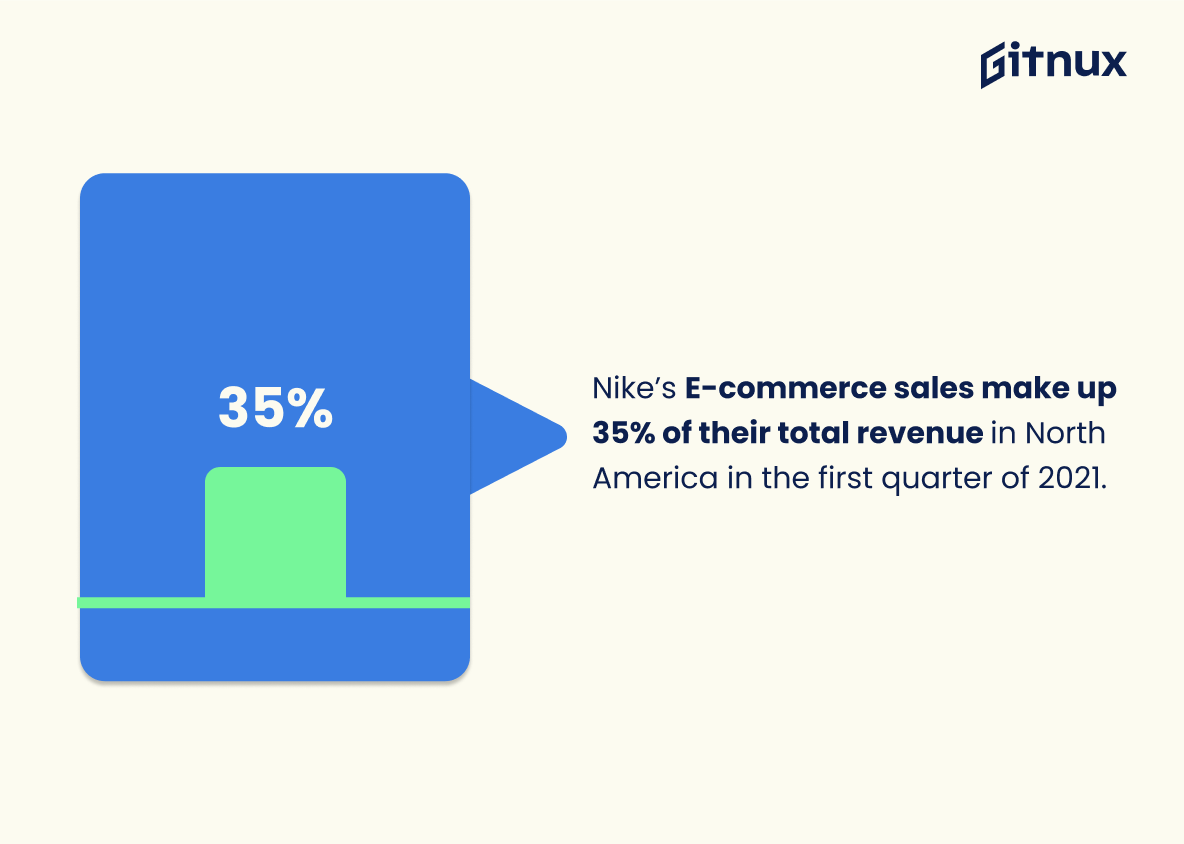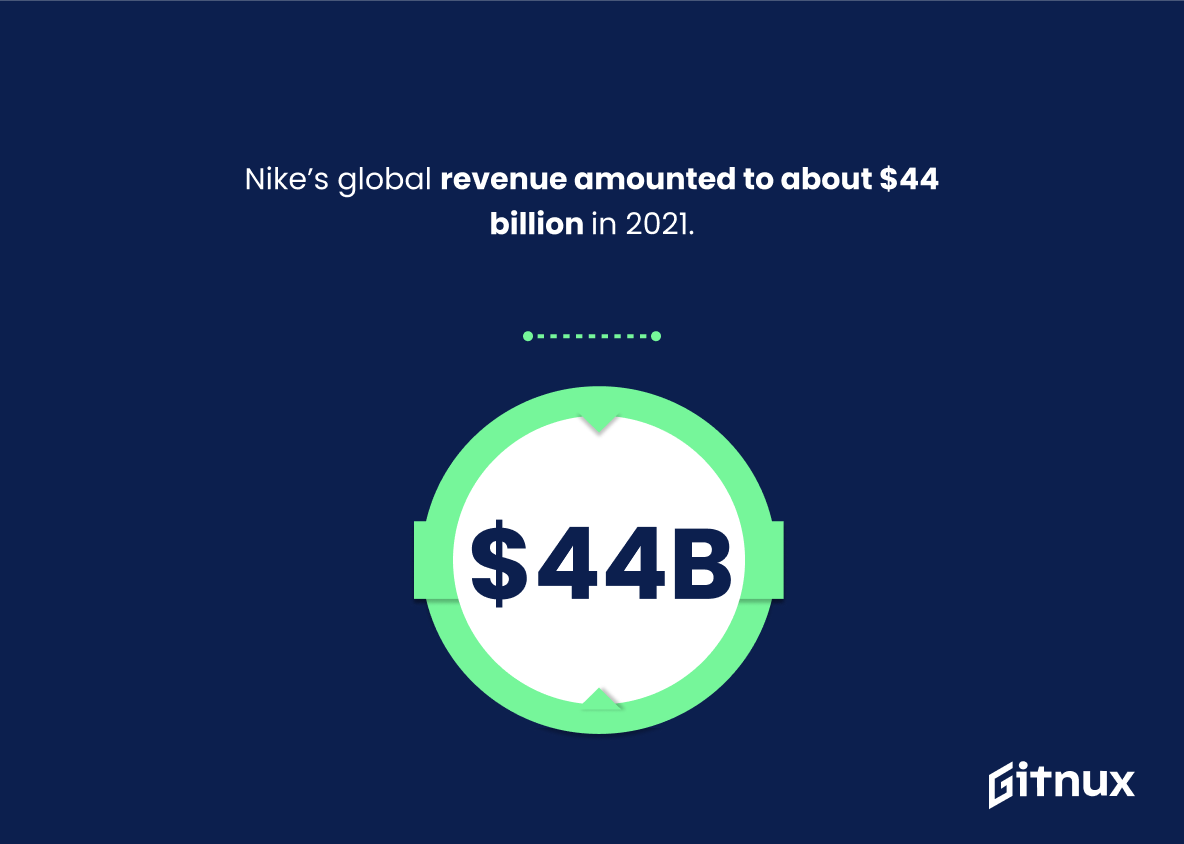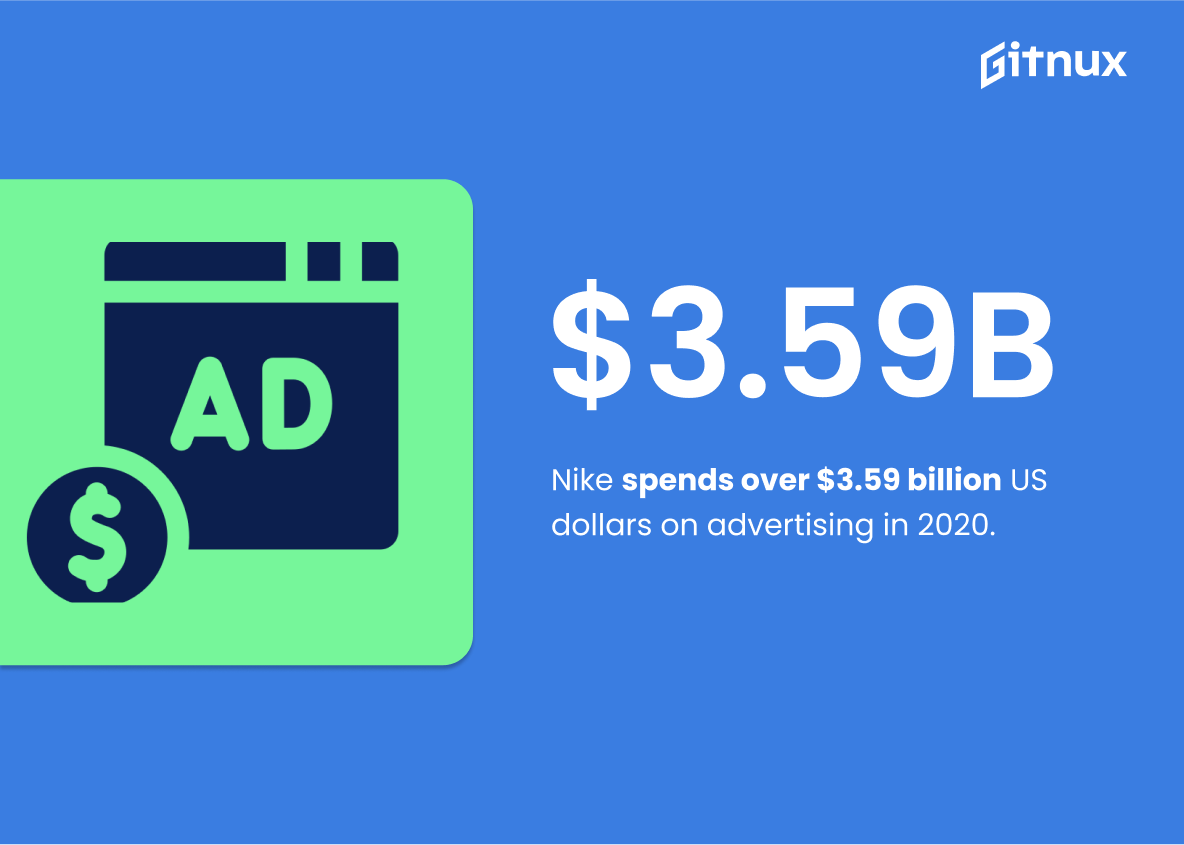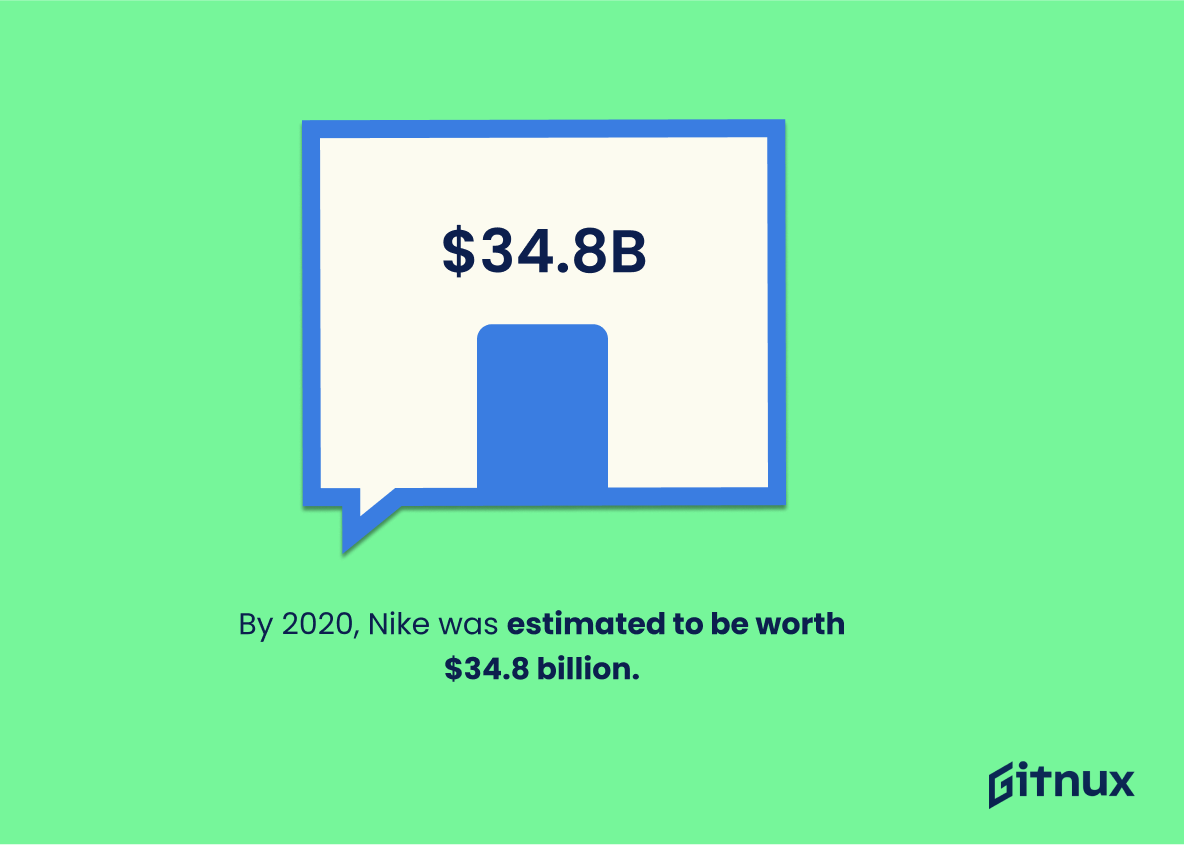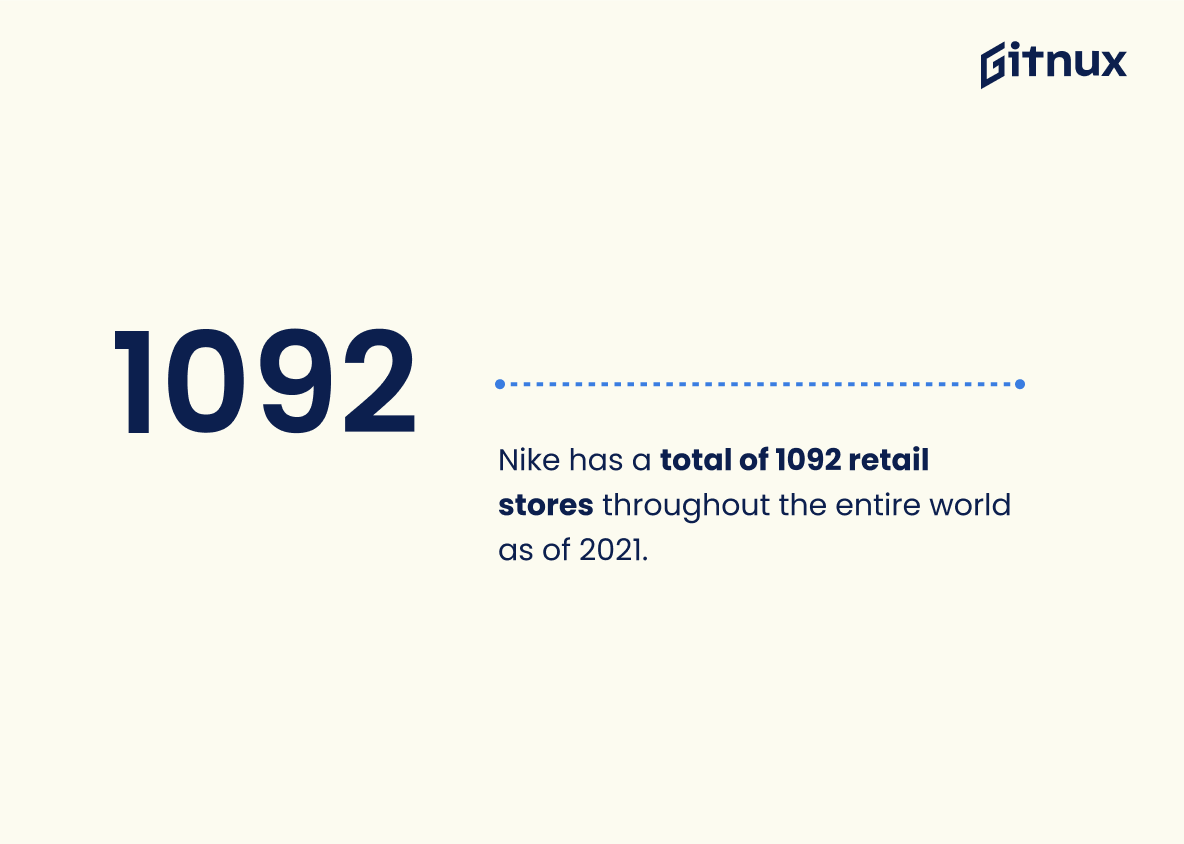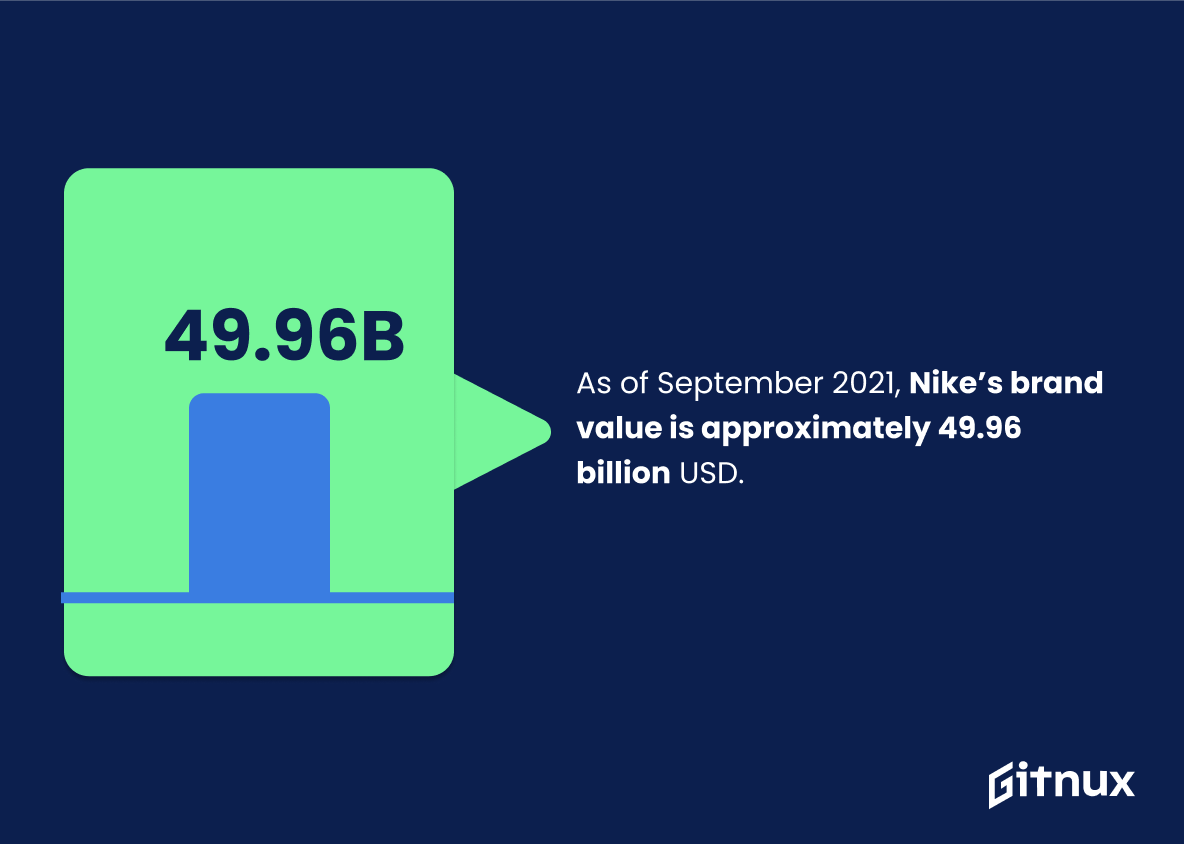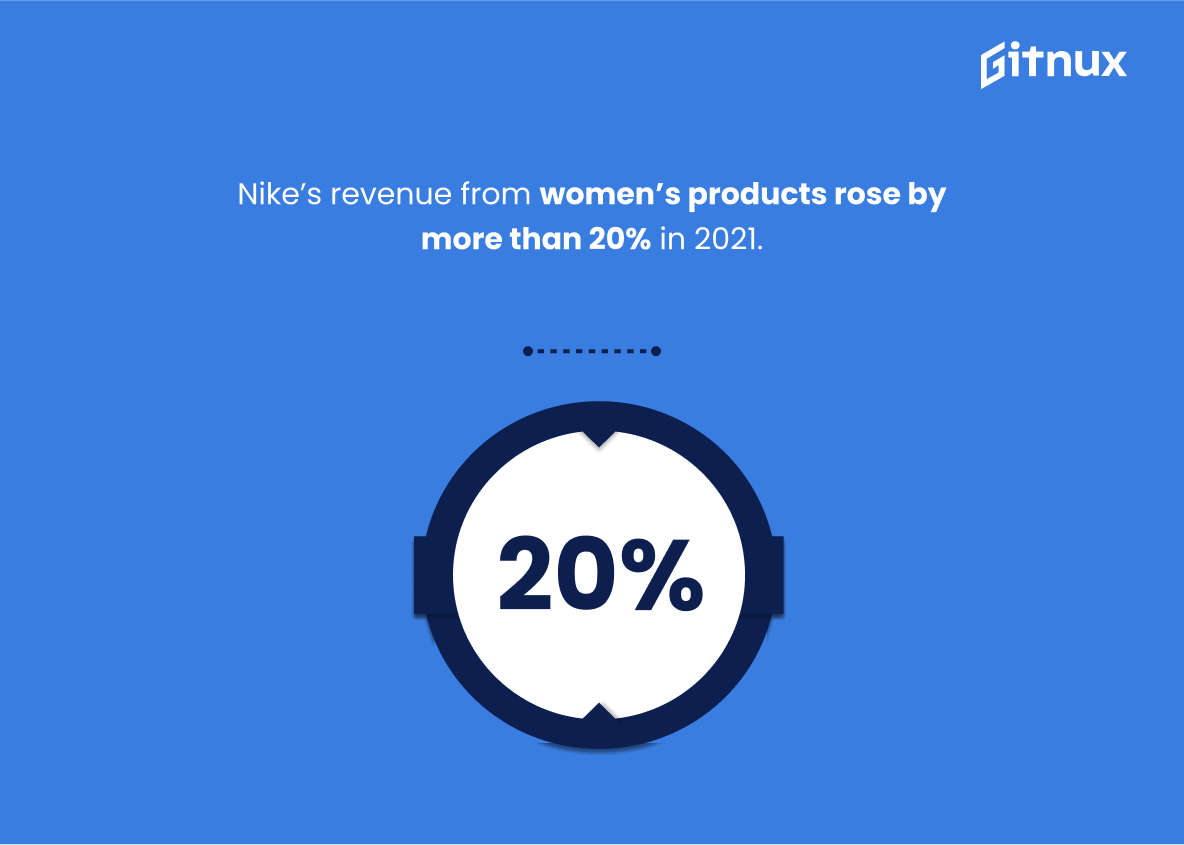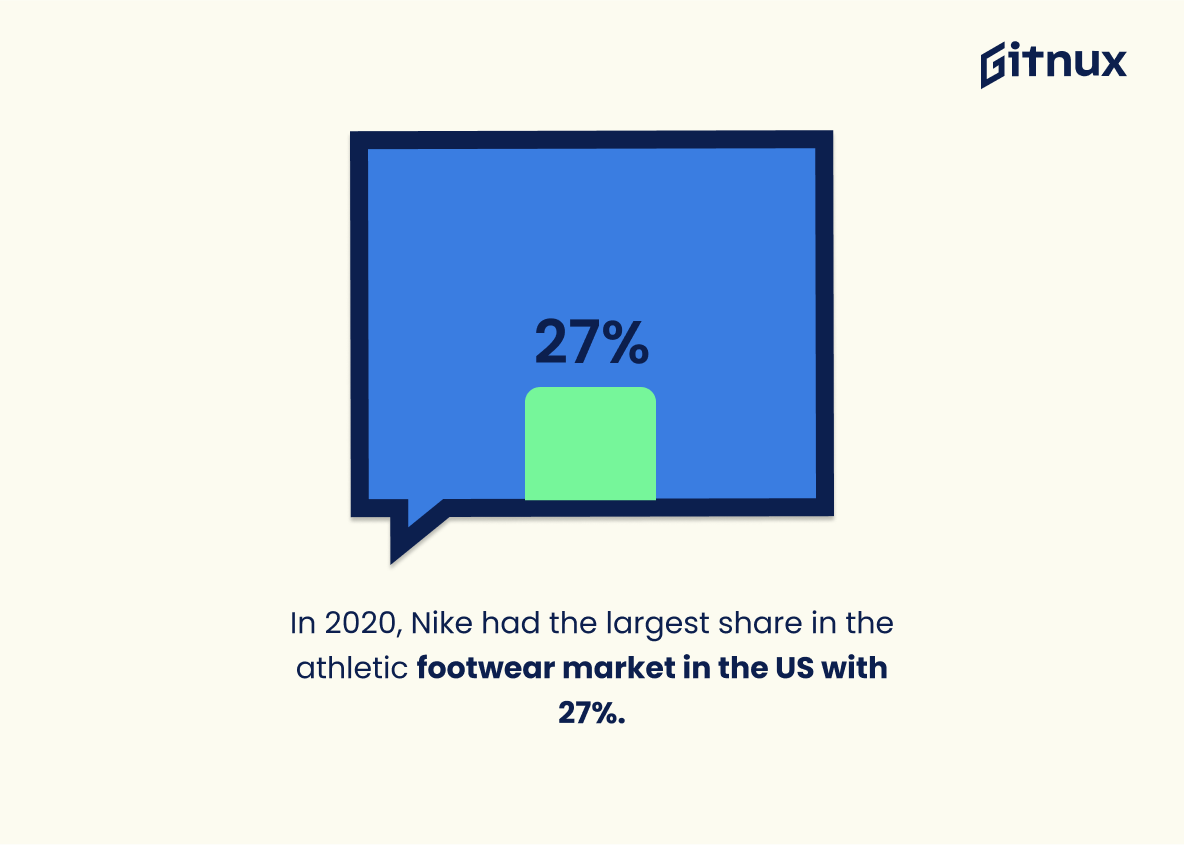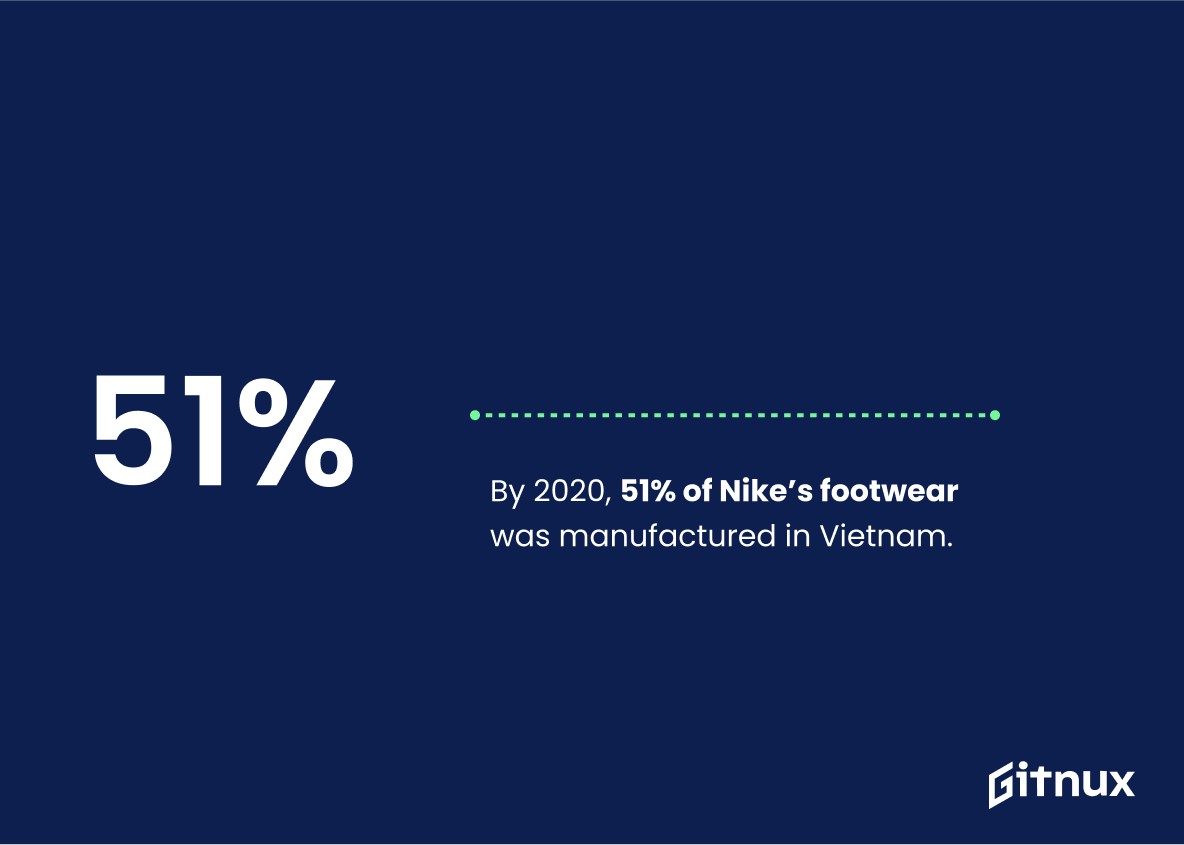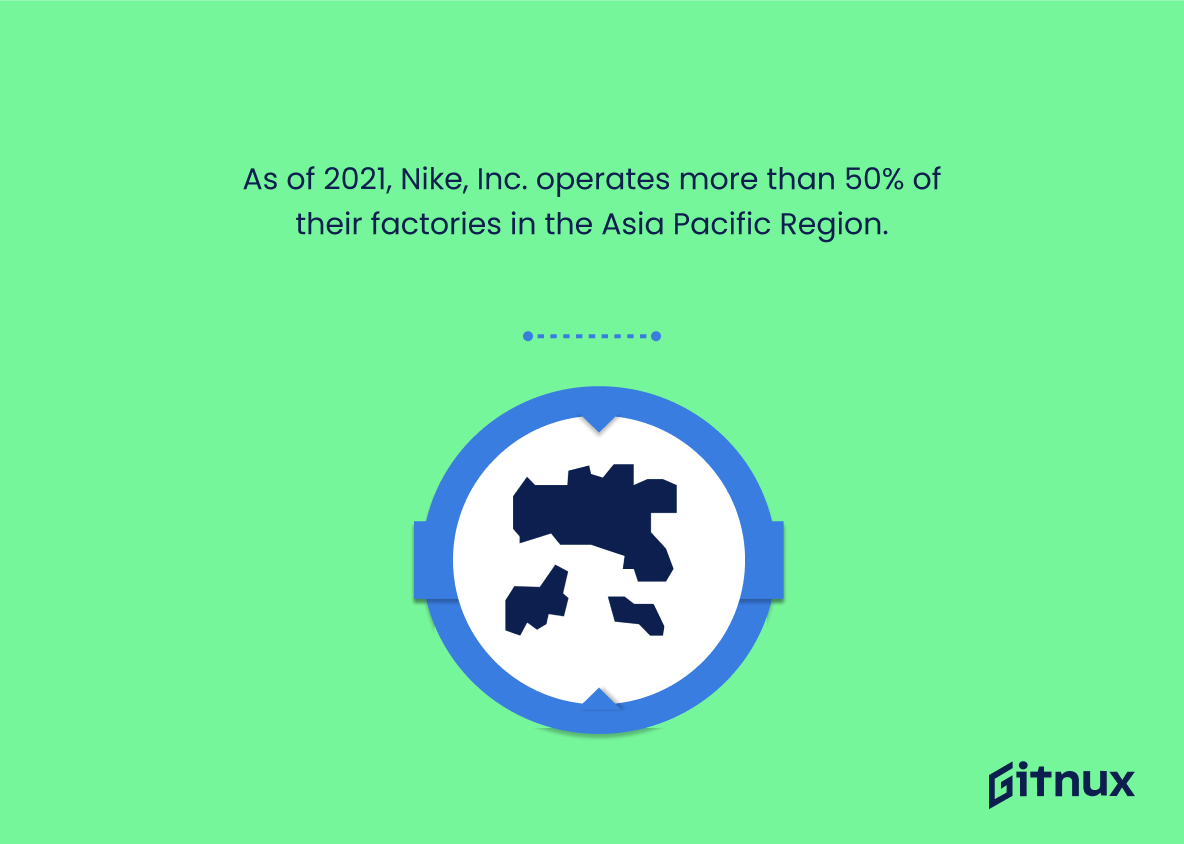The athletic apparel industry is a competitive landscape, teeming with brands vying for the top spot. However, one name has consistently stood tall over the decades: Nike. A powerhouse of innovation, branding, and market domination, Nike’s tale is the stuff of business legends. In this blog post, we will delve deep into the world of Nike. Going beyond just the iconic ‘swoosh’, we uncover the figures, trends, and statistics that define and propel Nike’s ongoing journey in the industry. By the time you’ve finished reading, you’ll have a clearer understanding of what makes Nike not just a global brand, but a significant player instrumental in shaping the athletic apparel market. So, lace up your sneakers and let’s embark on this statistical exploration.
The Latest Nike Industry Statistics Unveiled
Nike is the largest seller of athletic footwear and apparel in the world with revenue of $37.4 billion in 2020.
Highlighting Nike’s crowning achievement in leading the global athletic footwear and apparel industry provides readers with a concrete perspective of its market dominance. The $37.4 billion revenue generated in 2020 underscores just how powerful their consumer appeal and brand influence truly are. In a world teeming with competition, illustrating this billion-dollar figure puts into context both the company’s financial prowess and the extent of its market penetration. An impressive statistic like this brings to the fore Nike’s continuing success in its industry and sets the stage for further examination and discussion throughout the blog post.
Nike’s North America revenue amounts to about $14.49 billion in 2020.
Painting a vivid image of the indomitable market leader, the $14.49 billion revenue Nike generated in North America alone in 2020 underlines its financial prowess and robust consumer base. As a flagship segment, understanding the scale of Nike’s North American performance could be a touchstone for assessing the global competitive environment of the sportswear industry. This eye-popping figure, in turn, enables readers to fully appreciate the remarkable strides Nike is making in hurdling the hurdles of a challenging year, and its unrivaled ability to stay ahead of the game in an ever-dynamic industry.
Over 68,000 people were employed by Nike worldwide in 2020.
This engaging headcount portrays Nike not just as a global sportswear powerhouse, but also as a colossal employer, further emphasising its extensive economic influence. The figure of 68,000 global employees in 2020 underscores the company’s reach and magnitude, reflecting the sheer scale of its operations and its positive impact on worldwide employment rates. In essence, through this statistic, readers can perceive Nike not merely as a producer of sporting goods, but as a profound player in the global employment scene, a cornerstone of livelihoods for tens of thousands.
Nike’s E-commerce sales make up 35% of their total revenue in North America in the first quarter of 2021.
Delving into the realm of Nike’s financial realm reveals the striking fact that 35% of their total North American revenue in the first quarter of 2021 came solely from e-commerce sales. Comprehending this figure is like unlocking a treasure chest of insight into the shifting consumer preference towards digital shopping and Nike’s mastery of the online marketing strategies. It crafts a vivid image of how Nike, a traditional brick-and-mortar retailer, is charging ahead in the digital race, capturing online customer segments proficiently. This statistic acts as a testament to the brand’s dynamic adaptability to modern retail trends, underlining the significance of e-commerce in driving sales in the modern retail environment. No canvas of Nike industry statistics would be complete without this vibrant stroke, featuring the accelerating shift of Nike’s sales portfolio towards e-commerce platforms.
Nike’s global revenue amounted to about $44 billion in 2021.
In the realm of Nike Industry Statistics, the remarkable achievement of generating global revenue of $44 billion in 2021 forms the bedrock of understanding Nike’s formidable presence in the sports and lifestyle market. It’s a colossal figure that not only encapsulates the company’s sheer market dominance but also highlights their phenomenal growth trajectory. This revenue benchmark conjures the financial prowess and effective business strategies employed by Nike, setting it apart in the global sports apparel and footwear industry. Overall, the statistic acts as a financial mirror reflecting Nike’s unrivaled success and competitiveness.
Nike spends over $3.59 billion US dollars on advertising in 2020.
An irresistible plunge into Nike Industry Statistics swirls us around the astonishing figure of $3.59 billion US dollars, the titan sum invested in advertising by Nike in 2020. Undeniably, this dizzying expenditure underscores Nike’s relentless commitment to maintain its branding as an industry leader and its zeal to resonate with its massive global audience. This mammoth outpouring signals the pivotal role advertising plays in ushering brand visibility, consumer engagement and product innovation, thereby writing a thrilling new chapter in the annals of the dynamic retail landscape. It not only amplifies the brand’s resonating voice but also serves as a visionary lighthouse demonstrating the quintessential role of strategic advertising spending in fueling the engine of retail industry growth.
By 2020, Nike was estimated to be worth $34.8 billion.
Peeking into the fiscal landscape of Nike, the staggering $34.8 billion worth of the sportswear giant by 2020 becomes a cornerstone for analysis. This figure is much more than a bland number—it represents Nike’s enormous economic footprint and market dominance. This beacon of financial success illuminates the company’s influential standing and dynamism within the global sports apparel industry, highlighting its role as a key player. This statistic is the financial scaffolding around which a comprehensive discussion on Nike industry statistics can be constructed. Further, it offers context and scale when weighing the impact of Nike’s strategies, market initiatives, and business performance.
Nike has a total of 1092 retail stores throughout the entire world as of 2021.
The dramatic figure of 1092 Nike retail stores globally as of 2021 serves as a testament to the monumental reach and influence of the company in the sports and lifestyle industry. Illustrating this captivating global footprint allows us to comprehend the robustness of Nike’s network and its omnipresence in diverse markets. It provides an indisputable evidence of the brand’s impressive growth and dominance, painting a compelling portrait of Nike’s commercial prowess that extends beyond continents, cultures, and retail landscapes. Moreover, it gives an idea to investors and stakeholders about the scale and strength of Nike’s retail infrastructure and its potential to penetrate further into emerging markets.
As of September 2021, Nike’s brand value is approximately 49.96 billion USD.
Digging deep into the veins of the thriving sneaker industry, the staggering figure of Nike’s brand value at approximately 49.96 billion USD, as of September 2021, perfectly embodies its astounding economic prowess. Unveiling such a mammoth number radiates the global acceptance and popularity of the Nike brand, painting a vivid picture of consumer trust and loyalty. It complements the narrative on Nike’s market dominance, establishing its firm foothold and competitive edge over other industry players. Understanding this magnanimous worth also acts as a litmus test for interests of potential investors, providing key investment signals. It sets the stage impeccably for highlighting Nike’s ground-breaking feats in the footwear industry in a blog post on Nike Industry Statistics.
Nike’s revenue from women’s products rose by more than 20% in 2021.
Highlighting the fact that Nike’s revenue from women’s products surged by over 20% in 2021 truly underscores the growing significance of the female market segment within the sneakers and sportswear industry. This upward trend can be seen as a testament to Nike’s successful endeavors in appealing to, and capturing, the women’s demographic. Moreover, it hints at the strong potential for further growth, suggesting an exciting horizon for Nike as it continues to innovate and reshape its offerings to meet the unique needs and tastes of women consumers worldwide. In the grand scheme of Nike industry statistics, this figure essentially serves as a vibrant pulse indicating the firm’s vitality and agility in a fast-paced and ever-evolving market.
Nike reported a profit of $4.54 billion in 2021.
Delving into the prosperous realm of Nike’s financial health, the noteworthy revelation of a profit surge to $4.54 billion in 2021 effectively underscores the athletic behemoth’s enduring financial prowess. This figure stands as an emblematic testament to Nike’s robust revenue generation capabilities, thriving market presence, and adept operational management. In a blog post focused on Nike Industry Statistics, such fiscal evidence illuminates the company’s successful navigation through an unpredictable economic landscape, leaving readers with a tangible benchmark of Nike’s formidable financial achievement.
In 2020, Nike had the largest share in the athletic footwear market in the US with 27%.
Picturing the athletic footwear market as a giant, competitive race, the 27% market share statistic cements the status of Nike as the fastest runner in 2020. Not only does it convey their dominance in the market but also establishes their superior player status within the US. For those immersed in the Nike industry through our blog, this statistic serves as a compelling testament to the brand’s growth, influence, and sustained leadership, setting a powerful stage for the subsequent industry details we unravel.
By 2020, 51% of Nike’s footwear was manufactured in Vietnam.
Delving into the heart of Nike’s manufacturing landscape, deploying the precision of statistics at our disposal, we unearth a fascinating truth that defines the fulcrum of it operation. As the decade dawned in 2020, Vietnam – this Southeast Asian economic dynamo – undeniably emerged as the chief foundry of Nike’s footwear, churning out a stunning 51%. This number is a compelling testament to Nike’s strategic pivot towards Asia, particularly Vietnam, underscoring the country’s growing role and significance in Nike’s global supply chain. It mirrors a transformative shift in geography of production and accentuates the global reach of Nike’s operations. Weaving this statistic into the narratives about Nike furthers comprehension of the company’s cost structures, supply chains, and the subsequent impact on its pricing and profitability. Adding another layer, it also prompts us to ponder upon the company’s socio-economic influence and policy engagements in these manufacturing hubs. Such a move implicitly shapes the conversation in the context of Nike industry statistics.
Nike’s sneaker sales grew by 47% in Q1 2021.
In the vast landscape of Nike Industry Statistics, the fact that Nike’s sneaker sales leaped by a whopping 47% in Q1 2021 garners an extraordinary focus. This impressive spike serves as an eye-catching illustration of the dynamic growth and resilience the company has been showcasing even amidst challenging global conditions. Picture it not just as a dry percentage sign but as a testament to the brand’s competitive vigor in the wheelhouse of apparel sales. This percentage sets a compelling stage for an analysis of market strategies, consumer preferences, and economic conditions that fueled this staggering increase. Furthermore, it places a robust cornerstone for projecting the future trajectory of Nike in the sneaker market and beyond, for both industry stakeholders and devoted sneakerheads alike.
As of 2021, Nike, Inc. operates more than 50% of their factories in the Asia Pacific Region.
Highlighting the geographic distribution of Nike’s operations is significant for a couple key reasons. To start, Nike’s substantial presence in the Asia Pacific Region indicates a strategic manufacturing decision. The statistic draws attention to the cost effectiveness and production efficiency this region offers. Secondly, it allows us to tie Nike’s supply chain to broader global economic trends – such as labor cost, local infrastructure, and regional trade policies. This preponderance in Asia Pacific could feed into a discussion on environmental impact, labor rights or the influence of global politics on production. Therefore, the cited statistic lends valuable perspective on Nike’s operational strategy weaving multiple interconnected threads of business, economy and policy together.
Conclusion
In the realm of sportswear and athletic apparel, Nike’s impressive stature persistently stands out amidst its competitors. The Nike industry statistics discussed in this blog provide a crystal-clear picture of Nike’s noteworthy market influence, vast consumer base, and remarkable financial performance. Its continuous commitment to innovation and high quality, paired with an effective marketing strategy, enables Nike to maintain its dominance year after year. For potential investors, marketing enthusiasts or those simply fascinated by industry giants, these statistics offer intriguing insights into the formidable success of the swoosh symbol we’ve all come to recognize worldwide. As Nike continues to reach new heights, it sets greater benchmarks for the entire sportswear industry.
References
0. – https://www.www.businessofbusiness.com
1. – https://www.www.forbes.com
2. – https://www.footwearnews.com
3. – https://www.www.statista.com
4. – https://www.www.macrotrends.net
